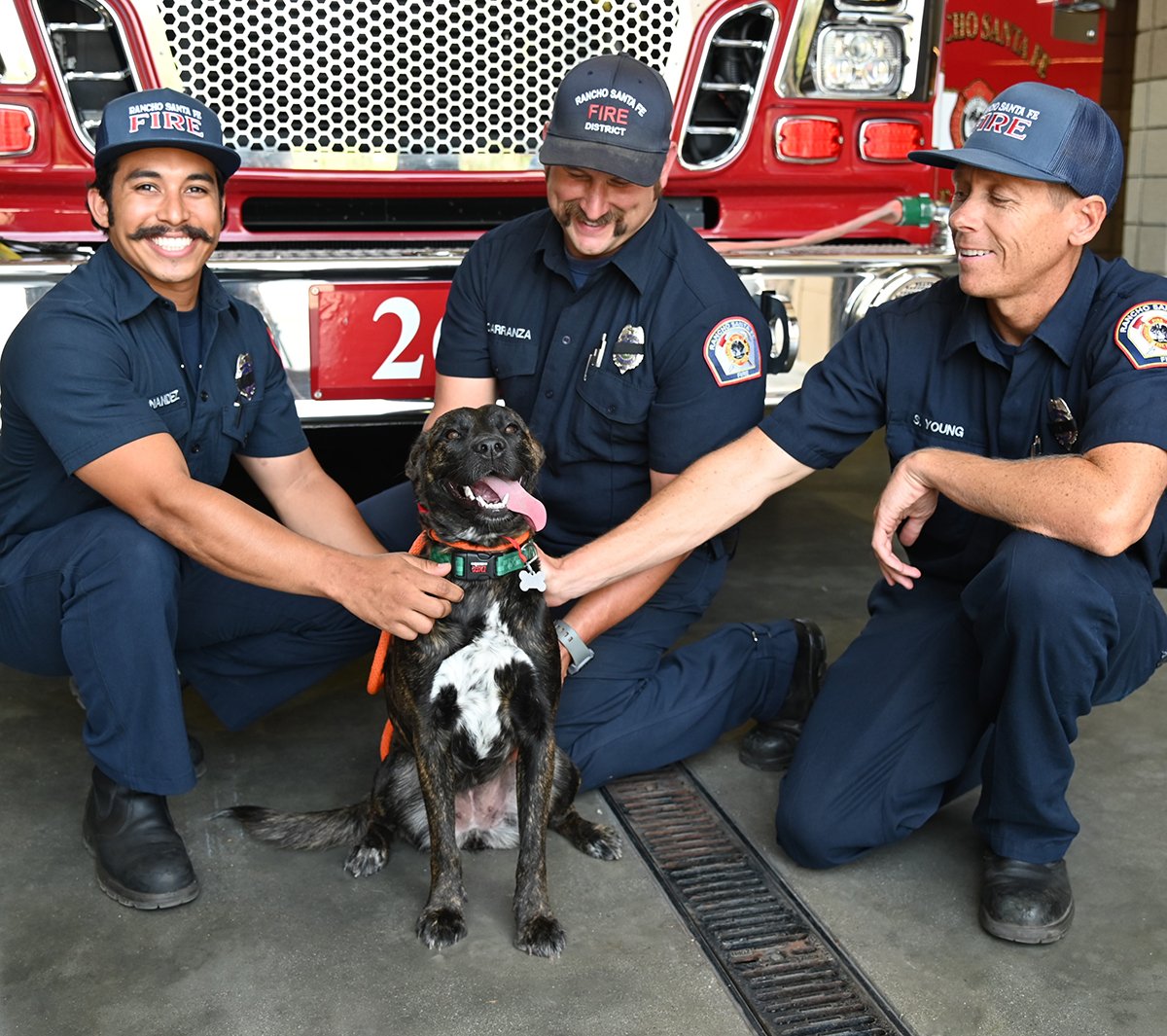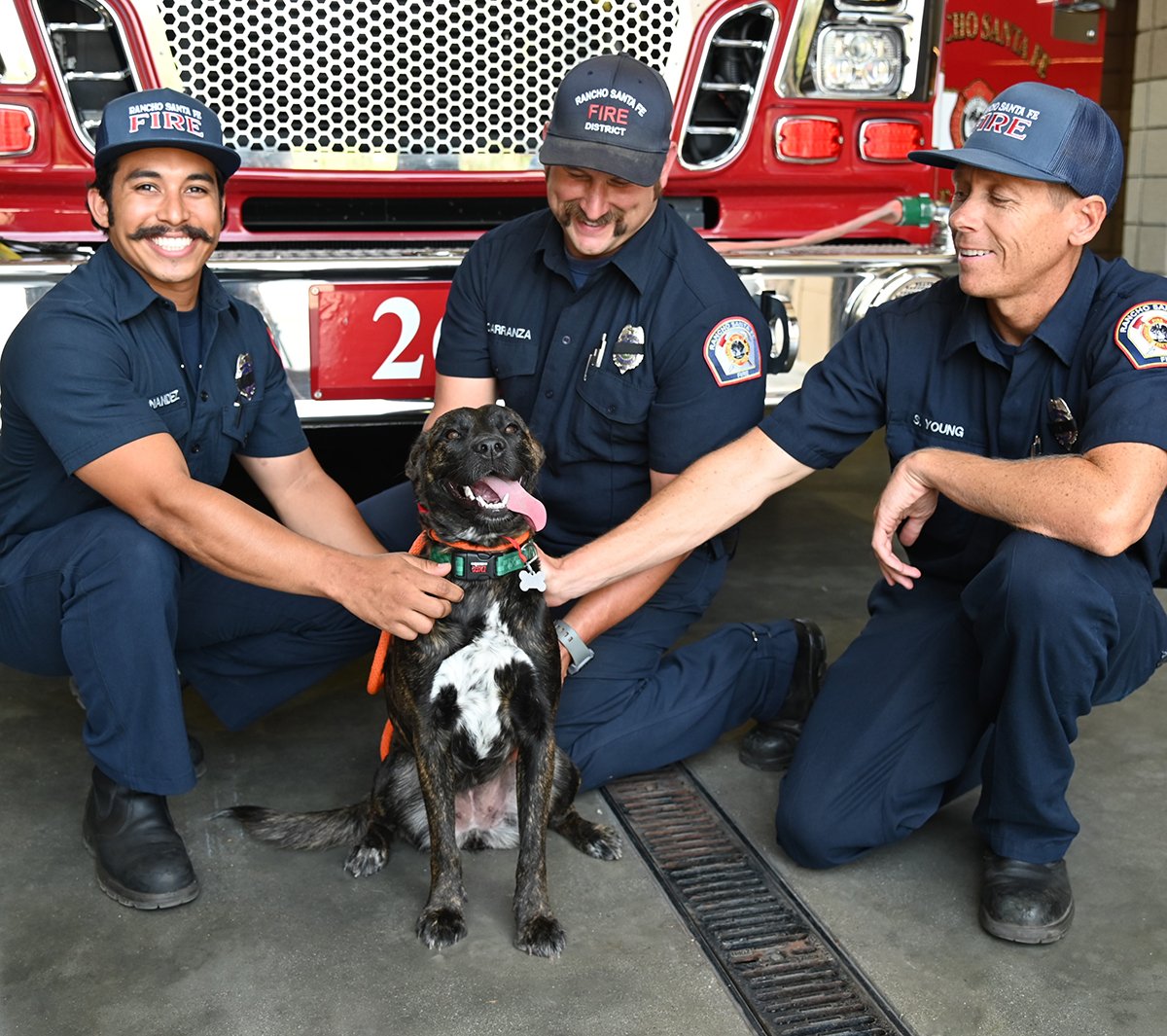

With the temperature heating up, California has headed directly into fire season, and human family members are not the only ones at risk. According to the National Fire Protection Association, nearly 1,000 house fires each year are accidentally started by pets and animals.
Most people probably don’t think much about cats jumping on the counters and dogs zooming around the house, but it’s important to stay diligent and practice safety measures with our pets. While it sounds strange, it can be easy for a cat or dog to turn on the stove accidentally.
In 2009, the American Kennel Club (AKC), ADT Security Services, and the National Volunteer Fire Council teamed up to create awareness on this topic by starting National Pet Fire Safety Day.
This year the Rancho Santa Fe Fire Department honored Helen Woodward Animal Center’s orphan pup, Heidi, with the title District National Pet Safety Day Ambassador.
GET THE BARK NEWSLETTER IN YOUR INBOX!
Sign up and get the answers to your questions.
Helen Woodward Animal Center is no stranger to the extreme danger wildfires can cause for our animal friends. In 2014, the Bernardo Fire blackened hundreds of acres and forced the evacuation of all 400 HWAC animals, from dogs and cats to chickens, desert tortoises, and alpacas.
Sadly, an estimated 500,000 pets are affected by home fires each year because families did not have a fire plan in place.
Pet Fire Safety Plan
The following tips will help you create a fire plan for your dog and help protect your home from accidental fire:
Include pets in your escape plan: Create an escape plan and practice it regularly. Someone will need to be in charge of getting your dog out of the house.
- Extinguish open flames: Don’t leave your pets unattended around an open flame, and make sure to extinguish any open flame before leaving your home thoroughly.
- Remove stove knobs: Be sure to remove stove knobs or protect them with covers before leaving the house.
Invest in flameless candles: These candles contain a light bulb rather than an open flame and take the danger out of your pet knocking over a candle.
Avoid glass water bowls on wooden decks: The sun’s rays, when filtered through glass water bowls, can heat up and ignite the wooden deck. Choose stainless steel or ceramic bowls instead.
Keep pets near entrances when you’re out: Keep collars and leashes at the ready in case firefighters need to rescue your dog. When leaving pets home alone, please keep them in areas or rooms near entrances where firefighters can easily find them.
Secure young pets: Especially with young puppies, keep them confined away from potential fire-starting hazards when you are away from home, such as in crates or behind baby gates in secure areas.
Consider using monitored smoke detectors: Monitored smoke detectors are connected to a monitoring center and allow emergency responders to be contacted when your pets are trapped. These systems provide an added layer of protection beyond battery-operated smoke alarms.
Affix a pet alert sticker or cling: Include how many pets are in the home, what types, and any important information for locating them.
Keep supplies in the trunk of your car: If your pets have items that would be hard to obtain when escaping a house fire (medicine, special food, etc.), make sure to have a small supply in the trunk of your car for emergency escapes.
Have your pet microchipped and keep tags up to date: If your pet escapes without you, having a microchip will make it easier to find them after the fire.
If you need a Pet Alert Window Cling, the National Volunteer Fire Council may be distributing them for free through volunteer firehouses nationwide in your area. The ASPCA also distributes “in case of emergency pet sticker” free on their website.